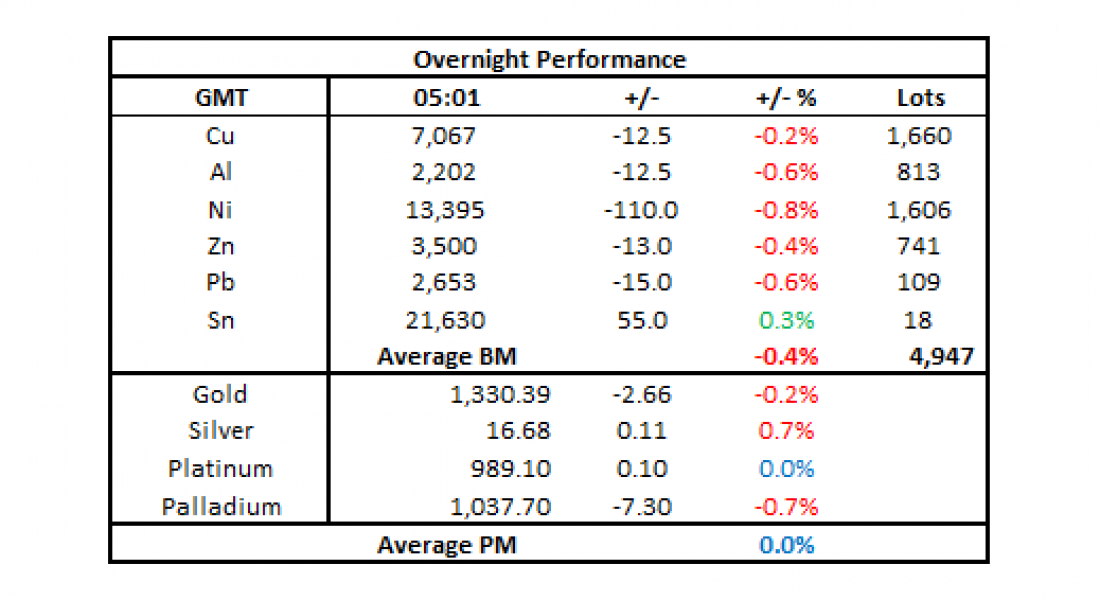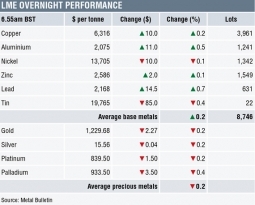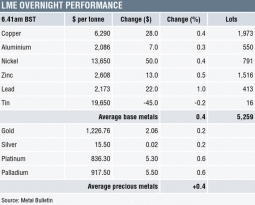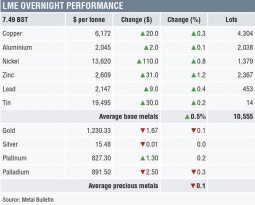The precious metals complex is largely flat this morning, with silver (+0.3%) being the only metal in positive territory. The lack of haven demand for precious metals remains despite a continued risk-on environment. In our view, this is due to the surge in US real yields – the 10-year US Treasury Inflation-Protected Securities yield (proxy for long-term US real rates) is at its highest since November 2015, predominantly driven by a rise in nominal yields as inflation expectations remain steady. Since US real rates are a key macro variable for the precious metals complex, we think that the remarkable increase in the 10-year US TIPS yield has prompted some speculative selling across the board.
Precious metals are also vulnerable to further weakness because the negative impact from the rise in US real rates is likely to be reinforced by the renewed appreciation in the dollar. Given the deterioration in global risk appetite, palladium is likely to be hit the most due to its stronger correlation to risk assets in addition to its quite stretched long positioning. Gold may prove the most resilient, thanks to its safe-haven characteristics.
Base metals traded on the London Metal Exchange are off to a slightly negative start this week, posting an average loss of 0.4% this morning, Monday February 2. Nickel (-0.8%) is down the most, while tin (+0.3%) is the only base metal showing a gain.
Volume has been fairly low with 4,947 lots traded as of 05.01 am London time.
The downward pressure across the complex seems to be driven by a further decline in global risk appetite, evident in losses across most risk assets in Asia, a drop in oil prices, and mildly tighter financial conditions in China, reflected in the uptick in the overnight Shanghai Interbank Offered Rate. Financial players prefer therefore to cut their long positioning across industrial metals this morning, in spite of a renewed weakness in the dollar (-0.4%) and stronger-than-expected print for China’s January Caixin services purchasing managers’ index (PMI).
This comes after a broadly negative performance last week when the London Metal Exchange Index posted a weekly loss of 0.7%, dragged lower by aluminium (-2.0%) in spite of its tighter micro dynamics (i.e. falling inventories, tighter spreads). Last week’s downward pressure in the base metals was primarily macro-driven, reflecting a notable surge in risk aversion (CBOE Volatility Index: +55%) and a renewed strength in the dollar – with the index up for the first time in seven weeks – following an intensifying rise in bond yields, with the 10-year US Treasury yield surging to its highest since January 2014.
On the Shanghai Futures Exchange today, the base metals complex is also experiencing slight downward pressure, posting an average loss of 0.5%. Similar to LME base metals, nickel (-2.5%) is the worst performer, while aluminium (+0.8%) and tin (+0.3%) are the only base metals in positive territory. Copper prices in Changjiang are down by 0.3% at 52,640-52,740 yuan per tonne and the LME/Shanghai copper arb ratio stands at 7.49, up from 7.42 on Friday.
On the macro front, investors will be paying close attention to the January services PMIs from Europe and United States, which could reinforce the risk-off mood should the data come out paradoxically stronger than expected, in so far as “good news” has become “bad news” (i.e. stronger economic data, tighter central bank policy stance, rising yields, and weaker risk assets as we saw on Friday). As discussed above, China’s Caixin services PMI, released earlier this morning, came out stronger than expected. Also, European Central Bank president Mario Draghi is due to testify before the European Parliament this afternoon, which could have implications for the foreign exchange market.
Base metals could continue to experience some downward pressure in the immediate term on the back of a stronger dollar. The recent weakness in the dollar has been exacerbated by speculative flows and as such, is not sustainable. A temporary rebound in the dollar could undermine base metals pricing. That said, the favorable micro dynamics in the industrial metals complex induces us to think that the “buy on the dips” mentality should prevail.
Metal Bulletin publishes live futures reports throughout the day, covering major metals exchanges news and prices.


The post Metals morning view: Precious metal prices are largely flat appeared first on The Bullion Desk.
Read More
Source: Bullion Desk News









